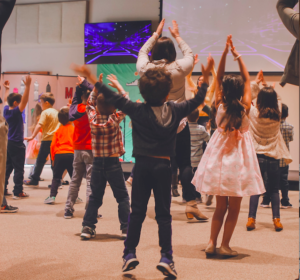
Photo by Anna Earl, of unsplash
The week before we vote in the California primaries, I’m thinking a lot about that gigantic block of non-voting citizens in our midst: kids.
The question I’m exploring in my book and in this blog is why, when the benefits are so obvious, there is so little documentation of the rich history of the use of the arts to engage and educate children? Is it because the arts have been so embedded in instruction that nobody has thought it necessary to tease them out? Is it because the history of pedagogy itself is so incomplete and sketchy? Or is it because influencers in education and policy funding are just not focused on actual living, breathing, but disenfranchised children!?
Regarding the last of these possible reasons: Like so many of us I was devastated by the last presidential election; but what also shocked me was how little the mainstream media focused on its impact on children. So many teachers, administrators, and counselors I’ve spoken to since then have described shattering stories of sobbing, frightened students, but aside from a few back page stories, there has been almost total silence from our news stream. A Southern Poverty Law Center publication was one of the few exceptions. Was nobody interested in the fact that school districts all over the country had to gear up to get counselors into classrooms the very next day, to help terrified kids process the trauma? That signs went up in front of public schools everywhere with varying versions of the message that “All children, of all races, ethnicities, and immigrant status, are safe and welcome here”? That letters went home to parents that week in many languages advising parents of their rights and counseling them on how to address fears with their families?
And is that lack of critical media attention what emboldened the cruelty our government has displayed in our name—separating thousands of children from their parents at the border.
I have already written one screed on the misguided cultural of “accountability” in our schools based on the deceptive evidence of standardized test scores, as if our students and teachers do not already have enough to worry about facing their unsure future on our planet. I have also written plenty of posts on the social, emotional, and cognitive benefits of arts education. This post is just to ask my readers to reflect on the comfort and solace offered by participation in the arts—comfort and solace our children need now more than ever.
I don’t have a certain answer to the question posed above, but I do know it is not our current president or anyone in his party.
GO GIRL……FIGHT ON…..LEAD THE WAY….BEST BLOG YET !!!
Thank you for writing this with such passion and insight.
Thank you, Susan. You would know!
The fear in classrooms is palpable. But, why has education, in general, received such short shrift in our country? Is it because children don’t vote? And, on a personal note: If I see one more science magnet at a middle school level I will scream! They are twelve. They should be getting basics and exploring everything.
Totally agree. Such an adult (voter) focused policy!
Thank you for your passion Robin. With you all the way. So much fear, such broken trust that we are constantly working to rebuild. We see a very real difference in participation of parents. So much work to do.
It is so important that people acknowledge and address the fear that our students are feeling. It moves far beyond immigrants and those who are referred to as “illegals”. For our children, all of them, the possibility of losing parents, family, friends, and life with the passing of a law or the presence INS or other people in law enforcement, is very, very real. It is not the boogeyman under the bed. They have classmates who have experienced loss firsthand. For our children it is real and very scarey. As teachers and parents we reassure them, hug them, and tell them over and over that things will be okay but it is sooooo hard. Especially when we know in our hearts that it may not be okay. I wonder, is this what parents, teachers, and students of Berlin felt after the elections in 1933 when Nazi storm troopers began to immigrants from Eastern Europe? The German press was silent…